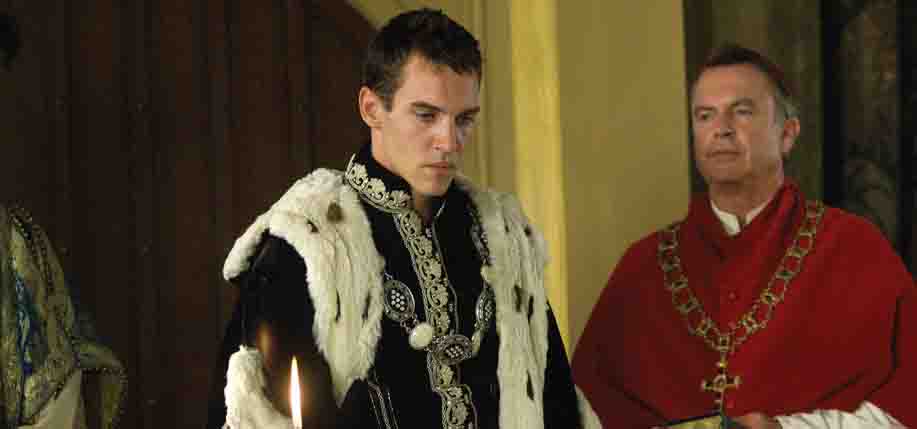Four hundred years ago in 1607, the Prince of Ulster, Hugh O’Neil the Great, and Rory O’Donnell, Earl of Tir Connell, set sail from Ireland to Spain and the Continent. Their exile marked the end of a momentous clash of civilizations that spanned the second half of the 16th century. From the mid-1500s to the Battle of Kinsale in 1601, a cataclysmic struggle was waged between two civilizations. One was the old Gaelic order in Ireland governed by regional kings and septs (clans) bound by an ancient language, law, traditions, ancestral consanguinity and an economy based on pastoral production from open commonage. The other civilization was a burgeoning, thrusting, centralized monarchy already embarked on world empire building, with an army of continental proportions and an emerging economy tempered in the crucible of mercantilist principles.
If, in the long eye of history, one could be transported back in time to Elizabethan England it would be possible to discern — however faintly — many of the embryonic structures and facets of a modern state.
A standing army, ocean-going navy, centralized government, permanent methods of tax collection, a national treasury, company structures, annuities, brokers, merchants and the growth in size and importance of cities – they were all there in Queen Elizabeth’s time, taking root in the most dynamic emerging market of its era.
While the trappings of Elizabethan England would be vaguely familiar to the time traveler, nowhere in the world of today is there a society reminiscent of Gaelic Ireland. When the Gaelic civilization disintegrated it left no successor, only a faint trace in fragments of a dying language.
In 1541, however, when Elizabeth’s father, the serial murderer Henry VIII, proclaimed himself King of Ireland, the Gaelic order was still embedded in its island home and still powerful enough to fight, for fifty years or more, a last desperate defense of its old ways before
being ruthlessly and efficiently annihilated by Elizabeth determined to pacify and anglicize Hibernia for evermore.
Many of the now revered Elizabethan adventurers, militarists, land speculators, poets and administrators bloodied their swords in the Elizabethan Holocaust (Raleigh, Spenser, Sidney, Essex, Mountjoy, Carew, Bingham, Chichester) and gained for themselves vast tracts of Irish land. The poet Spenser wrote The Fairie Queen in praise of Elizabeth on his estate at Kilcolman, Co. Cork. He also wrote A View of the Present State of Ireland, a chilling, albeit approving, account of the brutal campaign that left the defeated, leaderless inhabitants in a state of extreme destitution and despair.
Total war was waged by England against Gaelic order. Cattle herds were slaughtered to deny sustenance, means of production and storage destroyed, habitation razed to the ground, treaties broken at will, the Irish language proscribed, and priests hunted like rabbits in the field.
When in the end, inevitable defeat was forced upon the Irish, not just its fighting power but its entire social and economic structure crashed. “Plantation” was the English policy to finally Anglicize Ireland. English and Scottish colonists were to be “planted” in Ireland and the natives slaughtered, exiled or enslaved.
This policy of “Plantation,” which begun in earnest under Elizabeth, was continued with diligence under her successor, James I. The popular historian and chief propagandist and cheerleader for the British Empire, Niall Ferguson, in a moment of introspection wrote, “In reality, plantation meant what today is known as ‘ethnic cleansing.’” *
Famine and pestilence greatly reduced the native population. There would be many more battles and rebellions in future generations but the Gaelic order was dead.
Like the Native American, the Gael could not comprehend what was happening. Motivated by parochial loyalties and personal jealousies, they often squandered their strength fighting local turf wars and showed little comprehension of the depth of power being arrayed against them, until too late –– the economic and political forces of the day had mercilessly determined that their societies were to be no more, to be swept aside by the all-enveloping tide of progress.
Yet, what we see again in the long eye of history is a new tide. Four hundred years later in the reign of Elizabeth II, we see the resurrection of the Irish economy, warts and all, and a resurgent Ireland once more allying itself with Continental Europe in an effort to mitigate the influence and power of its nearest neighbor.
The 400 years between the annihilation of the Gaelic order and the emergence of the Irish-European one should be seen as an epoch, the termination of which is marked by the statistics which state that both productivity and Gross Domestic Product per capita in Ireland now exceed those of the U.K. by a fair margin. Restituta Hiberniae.
Emmett O’Connell K.St.G. was born and raised in the South Bronx and now lives in County Wexford.
* Empire, 2002, by Niall Ferguson, Penguin Books, pg. 56
ABOVE: Ironically, while Henry VIII did serious damage to the old Gaelic order, the successful Showtime series The Tudors features a largely Irish cast and crew, including Jonathan Rhys Meyers as Henry (pictured above with Omagh-born Sam Neill as Cardinal Thomas Wolsey), Marie Doyle Kennedy as Catherine of Aragon, and Nick Dunning as Sir Thomas Boleyn. Others involved with the production include, Morgan O’Sullivan, executive producer, James Flynn, producer, and costume designer Joan Bergin. ♦


Leave a Reply